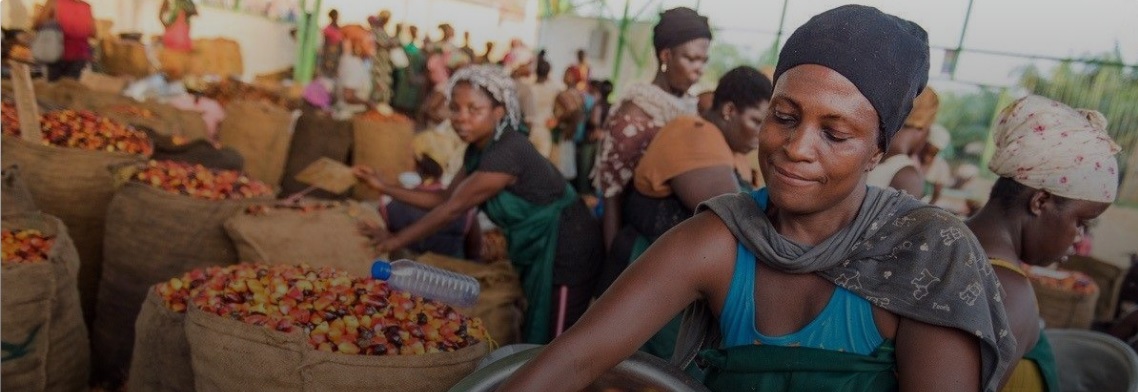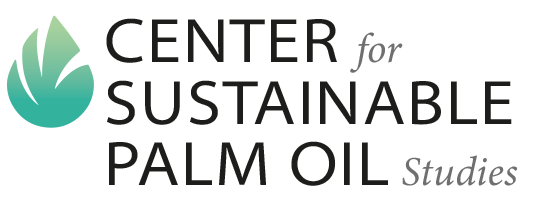
In this excerpt from his new book, Honor Thy Label, Dr. Bronner’s Gero Leson shares the company’s years-long journey to establishing a stable supply chain for fair trade, organic palm oil.
When Dr . Bronner’s decided, in 2005, to shift its major raw materials to organic and fair trade sources, palm oil naturally had to be included. It accounted for some 10 percent of our agricultural raw materials — and still does.
But by then, palm oil had become the devil’s oil. “You cannot produce sustainable and fair palm oil,” is the conventional wisdom of many of our activist allies, leaving consumers confused about the actual problems with the crop and unsure of what to do about it.
“Why is Dr. Bronner’s still using palm oil? Because it’s so cheap?” some ask us.
“Don’t you know it’s destroying the rainforest and killing orangutans?” others say.
If we wanted to give truthful answers to these questions, then building an organic and fair supply for palm oil was particularly important. Our experience over the last fifteen years now allows us to explain to customers and the world at large what palm oil is, how it works, and what damage and benefits it can generate up and down a supply chain. Thanks to our “in house” production of FTO (fair trade organic) palm oil, Dr. Bronner’s is in an excellent position to demonstrate that it is not the oil itself that native people and environmental NGOs fight against — for good reason — but rather the way it is generally grown: in large monocultures on carelessly cleared forest land.
I always add that Dr. Bronner’s is not using our own palm oil from Ghana because it’s cheap. Rather, as we joke, it’s one of the more expensive palm oils on the planet — because we produce it in a fair and regenerative way that benefits our host town, Asuom; its environs, and the planet at large in several significant ways.
Why has palm oil become so successful and controversial? In short, its unique composition of fatty acids offers diverse uses in processed goods at low cost.
Now, combine the versatility of palm oil with the economics of its production; and the reason for its success becomes obvious. Of all oil crops, the oil palm is the most productive, as measured by the output of oil per hectare. It typically produces 5 MT of oil per hectare per year; compare that with canola, soy, and sunflower, which all produce less than one MT per hectare per year. High productivity and low maintenance requirements of oil palms make for excellent economies of scale — in other words, the larger the plantation and the mill, the lower your cost of producing a metric ton of palm oil.
Then, the clearcutting or burning of preexisting forests begins — with the well-known, dreadful effects on people, animals, local environment and global climate. National governments in tropical countries generally support such aggressive development and accept its high social and environmental cost. They are driven by the need to generate export revenues — and corruption between private plantation developers and government decision-makers often plays a role. There just isn’t the oversight or even the interest to protect unproductive forest; it has no economic value except for those who live in it — and they have little voice.
Is sustainable palm oil possible?
In 2004, the largely uncontrolled sacrifice of forests and communities prompted a collaboration of prominent producers and traders of palm oil, banks and investors, major consumer brands, and NGOs. Named the Roundtable for Sustainable Palm Oil (RSPO), it was aimed at jointly tackling a global environmental problem and the growing criticism of palm oil by Western media and consumers that threatened to halt the global growth of its consumption.
RSPO’s key mandate: Promote the production of “sustainable oil palm” through credible and enforceable standards, effect improvements to setup and operation of oil palm plantations, and engage with all stakeholders. Now, RSPO has more than 4,500 members worldwide, representing all sectors of the palm oil value chain, plus financing and NGOs.
In theory, the original RSPO standard ensured “sustainable” plantation management, including minimization of uncontrolled soil movement and erosion. It permitted only the “controlled” use of agrochemicals. It also required that plantations employ “social accountability” and “transparency” when dealing with its labor force, smallholder farmers and local communities.
NGOs first routinely denounced poor enforcement of standards on certified plantations. Even many RSPO members were dissatisfied with loopholes, allowing continued deforestation. In response, RSPO adopted in late 2018 new principles and criteria — strengthening its rules on deforestation, planting, labor, and land rights. [Among other changes,] a standard for independent smallholders now regulates their practices and the relationships between farmers and large palm oil mills.
So, is all well with big palm oil? Not quite. Past standard violations by RSPO members — notably, large plantations — suggest an ongoing temptation to sacrifice planet for profit. The larger, global concern is that still only some 20 percent of the world’s palm oil production is RSPO-certified. The balance comes from plantations that are only regulated by their governments. Even worse, in 2018, less than 50 percent of that amount was actually sold as RSPO-certified. Both facts reflect poorly on the willingness of producers to follow RSPO’s pragmatic rules, and of brands and consumers to pay a very modest price premium that even covers the additional cost incurred by the producers to grow and mill RSPO palm oil.
This situation makes it unlikely that the topic of “sustainable palm oil” and the smoke over Southeast Asia will disappear from the news anytime soon. Meanwhile, most trusted brands have convinced their customers that RSPO-certified palm oil is as sustainable as it gets.
So, why would Dr. Bronner’s start its own production of organic and fair trade palm oil in Ghana? About half of the world’s palm fruits grow on small farms — in Africa, even more than 60 percent. Unsurprisingly, their yields are only about one-third of those of well-planted and maintained plantations. But that can be changed — increasing yields through improved seedlings, farm maintenance, and mixed agroforestry can expand global palm oil production without further clearing forest.
This will not happen overnight, but even its possibility explains why Dr. Bronner’s and other brands would pay a significant premium for an FTO palm oil from such smallholder farms.
Finding a route for organic and fair palm
Because Dr. Bronner’s had decided in mid-2005 to “go fair trade,” we had made good progress with our “clean supply chain.” David [Bronner] and I had been looking for sources [of organic and fair palm oil], and the story was no different from that for coconut and olive oil: Fair trade palm oil did not exist because FLO had not developed a standard for palm oil — and still hasn’t.
Luckily, we already knew that the Fair for Life standard would soon offer a credible alternative. And so, as we had done with coconut oil, we began searching for existing organic palm oil projects willing to “go fair trade” or, failing that, set up our own project.
With such low demand, no wonder there were, in 2006, worldwide only two relevant certified organic palm oil suppliers: Daabon in Colombia and AgroPalma in Brazil. They were plantation-based and Dr. Bronner’s had bought organic palm oil from both. Yet neither operation ran a meaningful smallholder program, and both seemed somewhat opportunistic about going fair trade.
Fortunately, our network offered an alternative. …
It took three years to get there — but we now had an organic, fair, and reasonably functional supply chain for some 300 MT per year of crude palm oil, shipped in flexi-tanks to Holland for refining, and then to be used by Dr. Bronner’s in soaps and by Rapunzel in its famous Tiger chocolate spread.
As in all our projects, it took about two years for farmers to understand our agenda: to pay fair prices that would make money for them while supporting community development.
Many FTO projects that combine farming and processing struggle with competitiveness. They benefit farmers and their communities; and create fair, safe and meaningful jobs. This raises their unit cost of production on several fronts: higher prices of raw materials, higher wages and benefits, higher overhead for professional staff, and non-production-related expenses spread over a smallish output. Dr. Bronner’s and other third-party customers will pay a premium over conventional or other “just organic” products. As long, that is, as the product has an inherent value — such as supporting fair, ecological, and effective development.
By Gero Leson
Original link: https://sustainablebrands.com/read/supply-chain/palm-oil-redeeming-an-evil-crop


